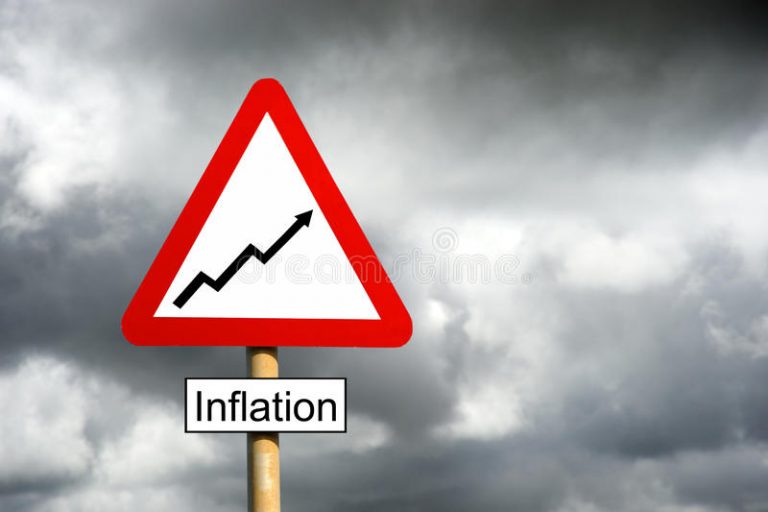Over the past years, South Africa has implemented a series of interest rate hikes to combat persistent inflation. The South African Reserve Bank (SARB) has taken a proactive stance in tightening monetary policy, raising the repo rate by a significant margin. This article explores the consequences of this prolonged high-interest rates on the South African economy, analyzing the effects on inflation, businesses, households, and credit demand. It also considers the challenges faced by policymakers in striking a balance between managing inflation expectations and fostering economic growth.
The High Interest Rate Cycle and Inflationary Pressures: The SARB’s monetary policy committee has consistently raised interest rates in an effort to bring inflation back to the target range. According to Trading Economics, the SARB increased its main lending rate by 50 bps to 8.25% during its May meeting, pushing borrowing costs to their highest level since May 2009 and surprising the market, which had anticipated a smaller rate hike of 25 bps. Despite these efforts, inflation continues to run hot, posing challenges for the central bank.
Analysts anticipate that the SARB will extend its tightening cycle and delay rate cuts further into the future due to countrywide power outages and the Rand weakness. These factors contribute to inflationary pressures, straining businesses and households alike. The SARB faces a dilemma of managing inflation without further hampering economic growth.
Impact on Businesses and Households: The prolonged high interest rate environment and persistent inflation have adverse effects on businesses and households in South Africa. Rising interest rates increase borrowing costs, which can lead to higher indebtedness. As household incomes struggle to keep up with rising prices, credit demand surges. This trend is evident in the increasing rate of defaults on credit cards and home loans. According to the Eighty20/XDS credit stress report, the rate of new defaults on credit cards in the fourth quarter rose 20% year- on-year and those on home loans 19%.
The Rand Weakness and Import Costs: The depreciation of the South African Rand adds to the challenges faced by the SARB. The weakening rand makes imports more expensive, contributing to inflationary pressures. Geopolitical concerns and electricity cuts have significantly impacted the Rand’s value. The risk of worsening power cuts and the U.S. ambassador’s remarks regarding the country’s stance in the Russia-Ukraine conflict have put additional strain on the Rand.
Divergence from Other Developing Economies: South Africa’s monetary policy outlook diverges from that of other developing economies. While many central banks have front-run the U.S. Federal Reserve in their hiking cycles, South Africa’s ongoing tightening cycle stands out. The country’s unique economic challenges, particularly the power crisis and the Rand weakness, necessitate a different approach. The SARB must strike a delicate balance between managing inflation and supporting economic growth.
Expectations and Forecasts: The SARB also revised its inflation forecasts, with inflation for 2023 now projected to average 6.2%, up from the previous estimate of 6.0%. This forecast revision paints a picture of a sticky inflation that is still not within the target 3-6% band. For 2024, inflation is expected to average 5.1%, up from the earlier projection of 4.9%. Economists have varying expectations regarding the future of South Africa’s monetary policy. While a majority expect a 25 basis points hike in the next rate decision. These forecasts reflect the uncertainty surrounding the country’s economic landscape and the challenges faced by policymakers.
SARB’s Interest Rate Hike Cycle

Managing Inflation Expectations: Despite the unpopularity of rate hikes in a low-growth economy, SARB Deputy Governor Rashad Cassim emphasizes the importance of managing inflation expectations. With Consumer Price Inflation (CPI) running above the SARB’s target range, the SARB aims to prevent the depreciation of the exchange rate and high food prices from permeating into other sectors of the inflation basket. The SARB believes that taking initial measures to manage inflation can lead to long-term benefits for consumers.
Impact on Economic Growth: The prolonged period of tight monetary policy poses challenges to economic growth in South Africa. While the primary focus is on managing inflation, policymakers are aware of the potential negative consequences on consumer income. The current economic landscape, combined with rising prices and power cuts, creates an environment where consumers face significant price pressures. However, policymakers believe that the short-term pain can yield long-term benefits for consumers.
Conclusion
The South African Reserve Bank’s decision to keep monetary policy tight for a longer period reflects the country’s ongoing battle with persistent inflation. The impact of this prolonged period of tight monetary policy is felt across various sectors of the economy, including businesses, households, and credit demand. The challenges posed by the power crisis, the Rand weakness, and rising import costs further complicate the SARB’s efforts to strike a balance between managing inflation expectations and fostering economic growth. As South Africa continues to navigate these challenges, policymakers must carefully consider the long-term implications of their decisions on the overall health and stability of the economy.
Sources: Bloomberg Trading Economics Reuters





This is a really good explanation of the current economic landscape in SA, and the reasons why we find ourselves with such high interest rates. Th3 author has done a great job of putting this in easy to understand layman’s terms for non-economists to understand. Looking forward to reading more articles on this site!
Thank you for the valuable feedback! We will be working on bringing you more economic topics in an easy-to-understand style.